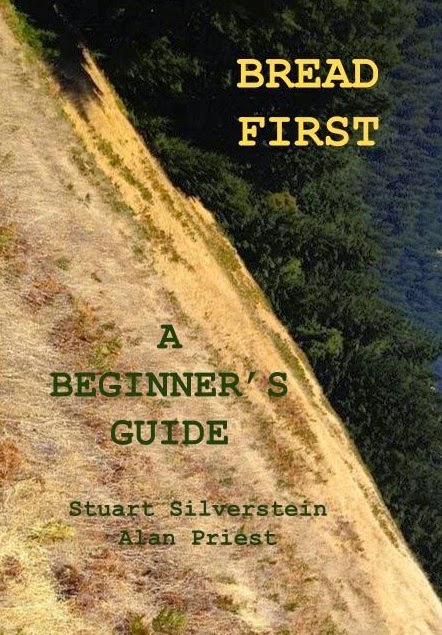 Yes, it was my fault. I had allowed too much sand to be mixed in with the clay, and you can see the result. But there is a happy ending. The courageous participants in the workshop wanted to rebuild (I felt like jumping in the river), and we started again. In only one hour we rebuilt the oven,
Yes, it was my fault. I had allowed too much sand to be mixed in with the clay, and you can see the result. But there is a happy ending. The courageous participants in the workshop wanted to rebuild (I felt like jumping in the river), and we started again. In only one hour we rebuilt the oven, Friday, July 31, 2009
When Disaster Strikes
The absolute importance of the right sand to clay ration when constructing an earth oven became abundantly clear to me yesterday when we had an oven collapse. One moment we were all smiling, congratulating ourselves on our fine work,  and ten seconds later our oven self-destructed.
and ten seconds later our oven self-destructed.  Yes, it was my fault. I had allowed too much sand to be mixed in with the clay, and you can see the result. But there is a happy ending. The courageous participants in the workshop wanted to rebuild (I felt like jumping in the river), and we started again. In only one hour we rebuilt the oven,
Yes, it was my fault. I had allowed too much sand to be mixed in with the clay, and you can see the result. But there is a happy ending. The courageous participants in the workshop wanted to rebuild (I felt like jumping in the river), and we started again. In only one hour we rebuilt the oven,  and in less than two hours we were eating our first pizza.
and in less than two hours we were eating our first pizza.
 Yes, it was my fault. I had allowed too much sand to be mixed in with the clay, and you can see the result. But there is a happy ending. The courageous participants in the workshop wanted to rebuild (I felt like jumping in the river), and we started again. In only one hour we rebuilt the oven,
Yes, it was my fault. I had allowed too much sand to be mixed in with the clay, and you can see the result. But there is a happy ending. The courageous participants in the workshop wanted to rebuild (I felt like jumping in the river), and we started again. In only one hour we rebuilt the oven,
Subscribe to:
Post Comments (Atom)






4 comments:
What do you consider "the right sand to clay ration"? With firing right after constrution, is there any other issues to be aware of? I'm guessing that keeping the water in the sand/clay to a minimum is important and would reduce the risk of the roof slumping???
Thanks - Earl
I would say that generally the right proportion of sand to clay is two or three parts sand to one part clay. But of course every situation is different unless you are buying a standardized potter's clay. Too much water will make it all slump. So, keep it as dry as you can, although it's much harder to work a dry mixture than a wet one.
Too much clay in the mix will cause severe cracking, while too much sand can cause an oven to collapse. Had I been monitoring the clay/sand mixture, then the oven would not have collapsed. We simply added extra clay to what had collapsed, and the oven was rebuilt without a problem.
Stu
Thanks - any comments on firing right away - do you use a sand mold?
Earl
I have always used a sand mold, and I fire the oven just as soon as I pull the sand out. I think you should wait until the oven is dry (and that should take about a day) before you insulate it.
Stu
Post a Comment